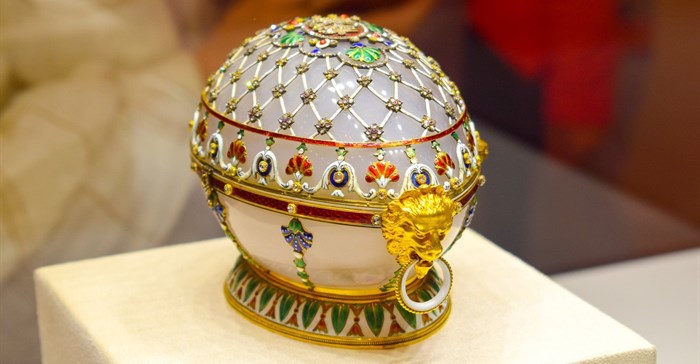
Subscribe & Follow
#AfricaMonth
Jobs
- Marketing Analyst George
- Spier Brand Manager - Wines South Africa Stellenbosch
- Model Booker Cape Town
- Marketing Coordinator Cape Town
- GRC Implementation Consultant (Risk Management) Johannesburg
- Financial Administrator Cape Town
- Senior Producer - Video, Audio Visual and TV Johannesburg
- Senior Campaign Mananger Cape Town
- Social Media/Marketing Assistant Durban
- Digital Marketing and Social Media Coordinator Johannesburg
In the news
The elusive 'insight' and the global appetite for meaningful knowledge
As an anthropologist in B2B marketing, I spend hours with decision-makers in the B2B world, speaking to them about their worlds. I also observe their workplaces, how they engage with products and the social dynamics between our client (sales) and their client (the ‘buyer’).
As someone who has been in research for most of her life, I hesitate to admit that historically I struggled with the concept of an “insight”. My colleagues seemed to be obsessed with them – an intangible silver bullet that supposedly unlocked the problem at hand.
Never in my academic experience had the word “insight” ever been mentioned! Whilst today there is material that explains what an insight is, very little of it explains how you get to one, or just how daunting the task can be.
As anthropology is a descriptive human science that uses detail and subjectivity to understand people, culture or dynamics, anthropologists are in a great position to illuminate the world of the target market. However, even the greatest researcher can be useless if they cannot distil their work and leverage all this information. Here are 5 tips on how to identify an insight:
1. Ways of seeing
There are many types of insights. There are psychological insights that reference what people are feeling on an unspoken but emotional or psychological level; there are cultural insights that dictate why certain rituals, practices or social norms have come to have power; and there are behavioural insights that provide a compelling understanding of why and how people do the things they do. This list is not exhaustive, nor are the types/kinds of insights closed – as most of the human world, they are messy and can overlap or reference more than one aspect of human existence. Remember that what you came to find will greatly influence how you perceive what you find.
2. Immersions
You need to spend time in the field. You need to speak to people, ask difficult questions and shadow them. You need to be a stalker, an empath and incredibly curious and detail-oriented. The discipline of anthropology teaches you to deeply immerse yourself in the world of the target market – this means using all your senses (all 21 of them) to become present. Document everything.
3. Sensemaking
After the many hours immersed in your target’s world, collecting ‘thick/rich’ data and compiling archives of transcriptions, photos and maps, you can begin to ‘sensemake’ the data. Sensemaking is a fancy term for trying to understand the way the world works for the consumer. This means a second immersion - but this time, you deep dive into your data. In this second immersion, you should identify fragments of knowledge, critical moments, meaningful observations, and times when you felt confused or emotional. Your subjectivity is part of the sensemaking process, and digging deeper into why both your target market (and you) felt or acted the way you did.
4. Insight beating
I use the word ‘beating’ because identifying an insight is a process of pain, growth and discomfort. This part requires the ability to locate contradictory or compelling tensions. It involves long working sessions of picking up and dropping ideas until you feel yourself seeing the bigger picture. Often, you know you have an insight when you literally feel it. An insight is just a new perspective, and there is a feeling that accompanies this new realization. You should feel the ‘a-ha’ - that tiny surge of positivity or optimism in your body that clicks the argument into place.
5. Land it
Once you finally have the insight you can backtrack and build the stories that got you to your insight. This involves using evidence (quotes, images, stories, or observations) to lay out the landscape and set up the tension through contradictory or deepening information that describes and isolates the problem. This should set you up to reveal the insight. The insight should solve the tension. It should explain what people are feeling or being motivated by on a very deep level. It should provide a fresh, informed, and vigorous angle on the problem. At this point, you have shared knowledge. You have taken a lot of information, unpacked and challenged it, and then you have synthesized it in such a way that has a purpose.
Whatever industry you work in, being insightful is as valuable as having experience. If you can be comfortable in the diversity of experiences people have, you will be well-poised to shape and locate insights. Within our vast continent, there are a wealth of insights waiting to be uncovered and leveraged in meaningful ways.
With a strong insight, a campaign can go from being a communication effort to a truly reciprocal experience for both the buyer and the brand. Brands evolve when they truly understand their market. Equipped with good insight, you can help your client solve a real problem that often has nothing to do with the product, but everything to do with the buyer’s world. Unsurprisingly, highly connected buyers are the most valuable ones.

About Claire Denham-Dyson
Claire Denham-Dyson started studying anthropology at the university currently known as Rhodes and then moved to UCT. After finishing her Honours degree she moved back to Johannesburg and through fate or luck she found that Warren Moss (CEO of Demographica) was looking for an anthropologist. Claire had never dreamed of using anthropology in advertising but loved the fact that it enabled her to meet so many people and learn about the culture of so many businesses.Related
#BizTrends2025: Vodacom’s Andisa Ntsubane – The anatomy of winning brands in 2025 22 Jan 2025 3 key considerations in harnessing curiosity in marketing 11 Dec 2024 Warc research: A clear customer promise is even more effective in B2B than B2C 15 Aug 2024 Cannes Lion Festival bought out by rival business, informa 24 Jul 2024 Can you Correlate it? We can 15 Jul 2024
















